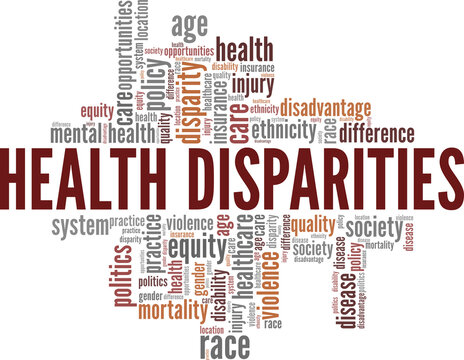"Blog 9: Health Inequalities"
Disparities in people's health are referred to as health inequalities. The term is widely used to describe disparities in how people are treated and provided with opportunity to live healthy lives, both of which have a significant impact on their health. Health disparities may emerge as a result of differences in health status (life expectancy or underlying medical issues), healthcare accessibility and affordability, socioeconomic variables, and healthcare and utility system quality.
The Ministry of Health and Family Welfare, Government of India, has launched the National Family Health Survey 2019-20, which aims to provide comprehensive, detailed, and exhaustive information on the current state of health, nutrition, population, and welfare in each state and union territory of India. It allows the government to keep track of state/UT development in many sectors and develop specific programmes to help them focus their efforts on areas that require immediate care and attention. The report can assist in quickly identifying and commenting on current health disparities in our system.
At this point, it should be obvious that, because we live in a patriarchal and inequitable society, rural women are at the bottom of the pyramid. Rural women not only lack access to sanitary goods, but they also lack access to cell phones, which have become indispensable in today's environment. They don't even have access to the internet, which may expose them to a plethora of opportunities that could significantly enhance their socioeconomic situation. They are the least likely to receive medical treatment and attention due to their worsening mental and physical health, as well as discrimination and the abuse they endure at home (sometimes even throughout their pregnancies).
It's past time for healthcare to become more accessible and inexpensive. At this moment, I believe the main reason we have such disappointing differences is that we live in a discriminating society where rural India is not considered as deserving of investment and prosperity, despite the fact that it houses two-thirds of our population. Yes, attempts to correct the situation have been made, but they have shown to be insincere. The majority of schemes aren't concerned with the reality on the ground. Their focus is once again on urban areas, and even then, on men. It is critical that we get beyond such classifications and understand the world in terms other than binary.
My report will be focused on the state of Karnataka.
One thing I noted throughout the report is that, while each sector has improved significantly since the report issued in 2015-16, the difference between urban and rural areas is discouraging, if not humiliating. It goes on to explain that, despite 75 years of independence, India is still far from progressing because it is unable to equitably ensure basic resources necessary for its residents' survival. Karnataka's performance has been disappointing, despite having a budget of INR 43,000 crores for health, social welfare, nutrition, sanitation, and other areas in FY 2019-20 alone.
This inequality presents itself in India in two ways: the difference between urban and rural people, and the divide between male and female populations.
To begin with, between the reports of 2019-20 and 2015-16, access to sanitation facilities and cooking fuel significantly improved (17 percent and 25 percent respectively). Rural divisions, on the other hand, have indicated differences of 15.9% and 25.2 percent with their urban counterparts for the year 2019-20, respectively. Because lack of access to sanitation and hygiene facilities, as well as clean fuel, is one of the primary causes of diseases and health issues in India, I opted to highlight these two categories first.
The male-female disparity is widening due to increased awareness of family planning and availability to contraceptives. The disparity between female sterilisation (57.4%) and its stunning male equal (0.0%) demonstrates the stigma and lack of understanding surrounding the matter. Men's use of contraceptives is frowned upon, which explains why many are nervous of going under the needle, despite the fact that it is a reversible, safer, and much simpler procedure.
Despite the fact that there has been a commendable and significant progress in the area of reproductive, maternity, and child health care, many people still cannot afford them. Let me give you some figures from the report: In a public health institution, the average out-of-pocket expenditure per delivery is INR 5,042 (urban areas), INR 4,911 (rural areas), INR 4,954 (Total 2019-20), and INR 4,824 (Total 2019-20). (Total 2015-16). In Karnataka, the average monthly pay is roughly INR 9,250. Can a regular person afford to spend more than half of their monthly income on their child's birth?
In rural areas, the percentage of stunted and malnourished children under the age of five is also significantly greater. When it comes to low BMI, the same is true for folks from rural areas. Women do much worse, with a 7% disparity between males and women. Anemia, on the other hand, is the worst case scenario. In fact, women are 250 percent more likely than males to be anaemic! Even among women, ladies from rural areas have a worse situation. This demonstrates the abysmal state of rural India's healthcare system.
Finally, everyone should be able to obtain healthcare. Gender inequality, discrimination, and health disparities are all interconnected issues. If you solve one, you've already taken the first step in solving the others. Because of its people, India is India. But how can the country progress if its citizens die as a result of a failing healthcare system? Indeed, health is wealth; in fact, it is everything. It's critical that we put it first now, tomorrow, and right now!
:max_bytes(150000):strip_icc()/health-disparities-4173220_v1-e8914773af574e3d9f02b08d86835de5.jpg)


Comments
Post a Comment